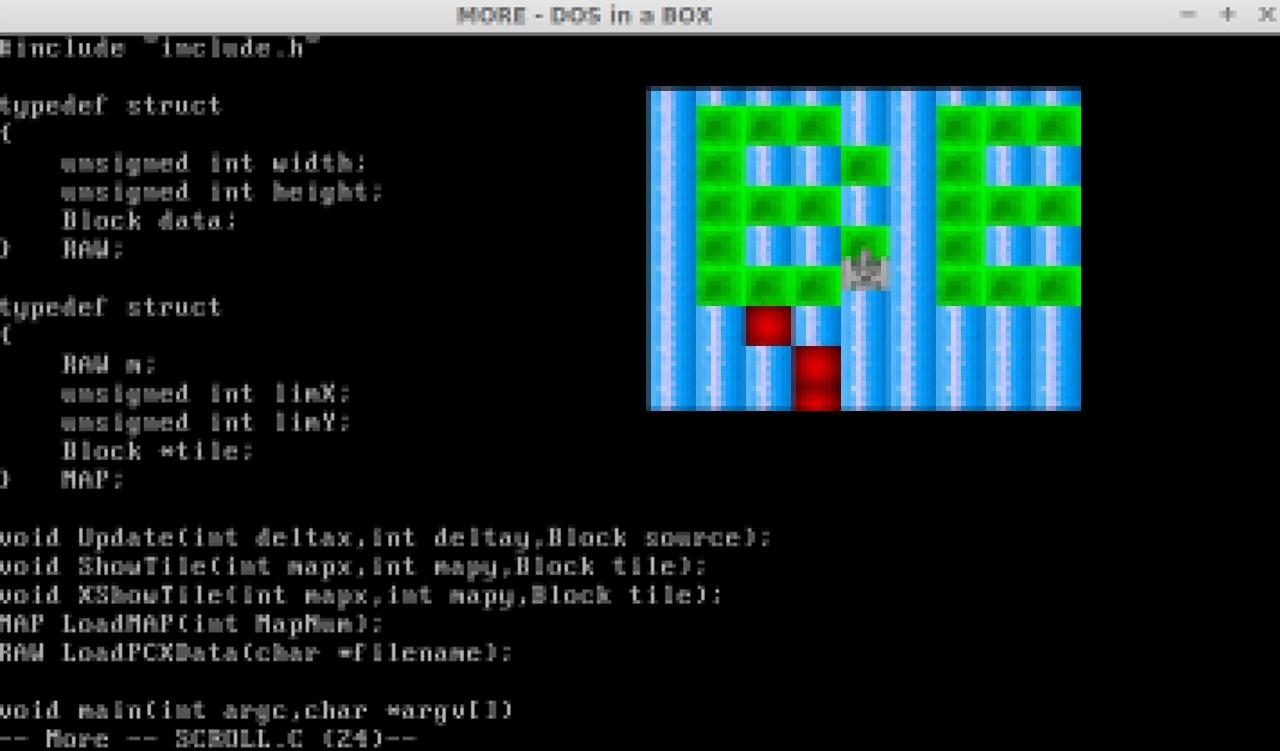whoami
I'm a geek and proud of it.
I code, automate and build infrastructures.
I run Linux and FreeBSD, dislike Windows.
I love running, from track, road, trails to mountains.
I like anime, retro gaming, nature photography, doodling and making crafts.
resume
mode 13h
source
downloadThis was my game library written in C with embedded x86 assembly, compiled under Borland C. It includes most of the functionality required for a DOS game: video, mouse, keyboard handlers. It also has an Autodesk FLI animation file playback function.
A sample test scroller is included, that loads PCX maps and tiles, using embedded assembler to make fast and smooth scrolling with double buffer writes directly to the video memory. scroll takes a parameter for number of pixel to shift each time, without any parameter the default is 2 pixels. scroll 4 results fast smooth scrolling with any 486 or faster CPU.

wildlife tetris
source
play
download
This was my first DOS game attempt back in high school days. The entire game was written in C and embedded x86 assembly, compiled under Borland C. Code was optimized for running in mode13h 320x200x256c in DOS. The images were compressed using RLC - run length encoding compression which is really the same as the compression algorithm PCX uses. The code was poorly designed and not documented.
Now you can play this online with a web browser, big thanks to archive.org/DOS Museum. Use arrows keys and space (clockwise rotation) or keypad with 2, 4, 6, 8 and 5 (counter-clockwise rotation).
race stats
This was legacy php code does scraping on racestats html, it needs to be updated...
Back in 2011, I was running a great race in Mississauga Marathon. I was on my way to a personal record with a negative split, just under a minute faster in my second half. With about 2-3 km to go, There were 2 runners picked up their pace significantly that I was unable to keep up, then they passed me. Out of curiosity, I wanted to find out how many runners passed me late in the game, so I wrote this to get some fun stats out of Marathon race results.
It turns out there were 3 runners passed me, not 2! obviously I was too exhausted to count properly...
rad climber
source coming soon...
click on the cyclist with flat tire to playThis was a retro style endless runner game I created in one of the MEC hackathon. This mini game is hidden on the maintenance page for error 500 on mec.ca
It was inspired from the Chrome Dino. The name Rad Climber was from the legendary Rad Pants.

Game was created with ct.js
Sprites were created with MediBang Paint
art
Some of my imagination expressed here through drawings & crafts. Art Gallery
Amazing views caputred on camera during my runs. Photo Gallery
shop
I wanted some t-shirt design with trail & mountain runners so I've designed a few myself merch shop
contact


